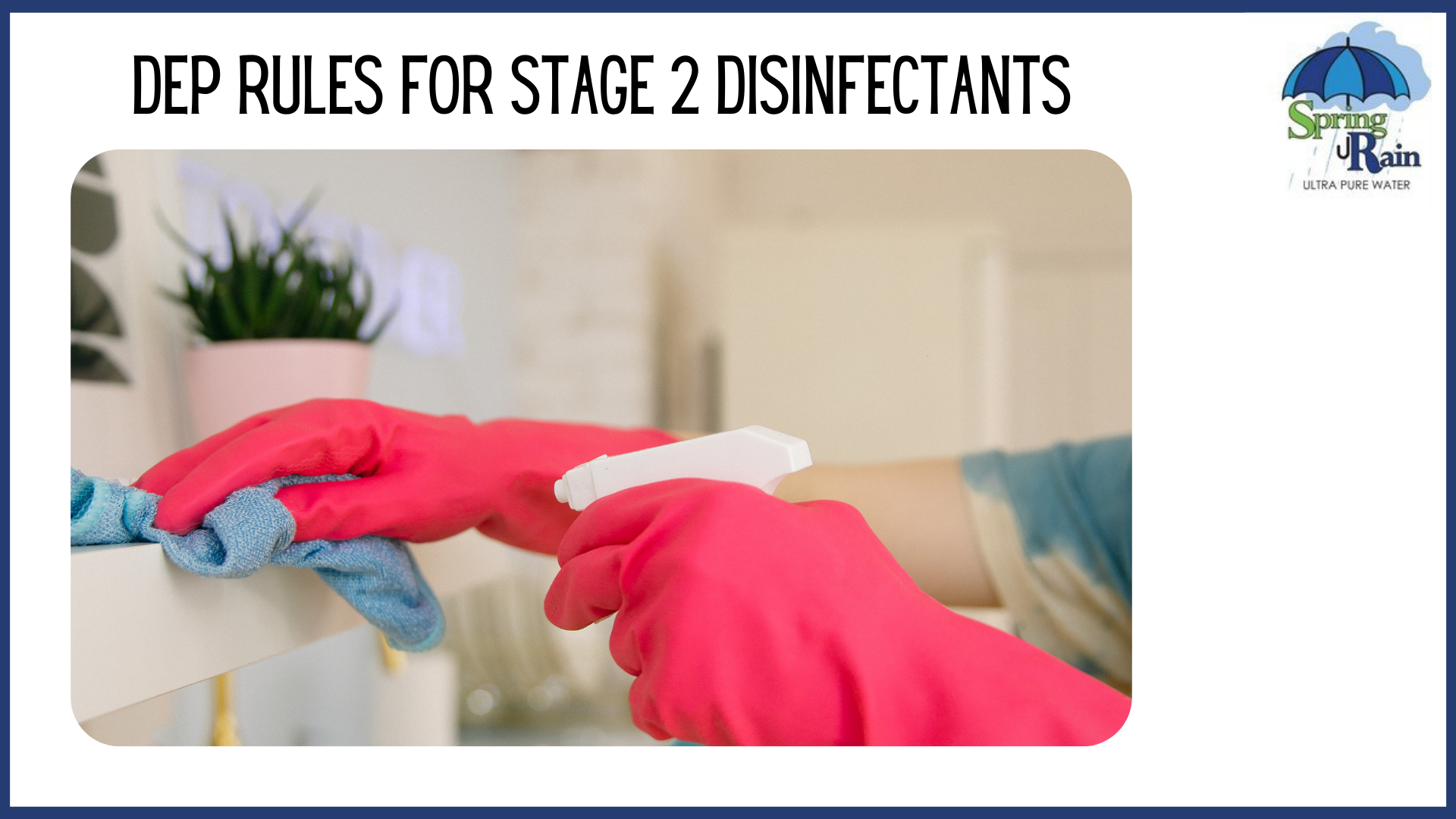What is a Stage 2 Disinfectant?
A Stage 2 disinfectant is a pesticide that inactivates certain microorganisms such as viruses and bacteria by destroying their cellular structure. The main purpose of a Stage 2 Disinfectant is to ensure protection from pathogens, primarily Legionella pneumophila, which cause Legionnaire's disease. Legionnaire's disease is a serious type of pneumonia that people can get when they breathe in water vapor containing the Legionella bacteria.
What is a Disinfection Byproduct?
Disinfection byproducts are chemical compounds that result from the use of disinfectants in water treatment. A representative group of these byproducts have been found to potentially pose a risk to human health, one being carcinogenic, and others affecting the liver or immune system. The formation of disinfection byproducts is related to water temperature, pH, the concentration of natural organic matter, and the presence of disinfectants themselves.
What is the Stage 2 Disinfectant Rule?
The Stage 2 Disinfectant Rule is a new federal regulation (NOTE: Stage 1 is a final federal regulation and was published in the Pennsylvania Bulletin on July 21, 2001). The US Environmental Protection Agency created Stage 2 to supplement existing regulations by requiring drinking water suppliers to meet disinfection byproduct maximum contaminant levels at each monitoring site in the distribution system.
This rule seeks to better identify monitoring sites where customers are exposed to high levels of disinfection byproducts. This regulation will reduce byproduct exposure for more than 69 million Americans across the country, including more than 4.5 million people in Pennsylvania.
Why the need for a new Disinfectant rule?
The Stage 2 Disinfectant Rule is needed because approximately 700 outbreaks of disease have been linked to inadequately treated drinking water since 1980, including 13 in Pennsylvania. Inadequately treated drinking water can also lead to increased health risks from disinfection byproducts.
What type of Disinfectants are being used?
There are two types of disinfectants that will be regulated under this rule: chlorine and chloramine. Chlorine is a common household bleach used in laundry and cleaning products. Chloramines are created when chlorine reacts with nitrogen-containing ammonia to form monochloramine, dichloramine, or trichloramone.
What must your Municipality do?
The facilities that must comply include community water systems, non-transient non-community water systems (NTNCWS) and transient non-community water systems (TNCWS). State funds may be available to help municipalities pay for the costs of compliance.
Who is affected?
These rules affect all public supplies serving more than 1,000 year-round residents or 25 seasonal residents that do not meet current Total Coliform Rule criteria. This includes non-community water systems, which are any system that supplies water to people who do not have a place of business served by the system.
What is required?
The new regulation requires public water suppliers to test for disinfection byproducts at least once per month during the warmest months of the year or if they exceed 4 parts per billion in any one month.
Any water system that uses a chlorine disinfectant or a chloramines disinfection process must conduct a total organic carbon (TOC) baseline survey, and then follow-up with quarterly TOC monitoring at each entry point to the distribution system, during periods of maximum demand. Systems using other types of disinfection processes will only be required to monitor for TOC at the entry points to the distribution system.

Recent Comments